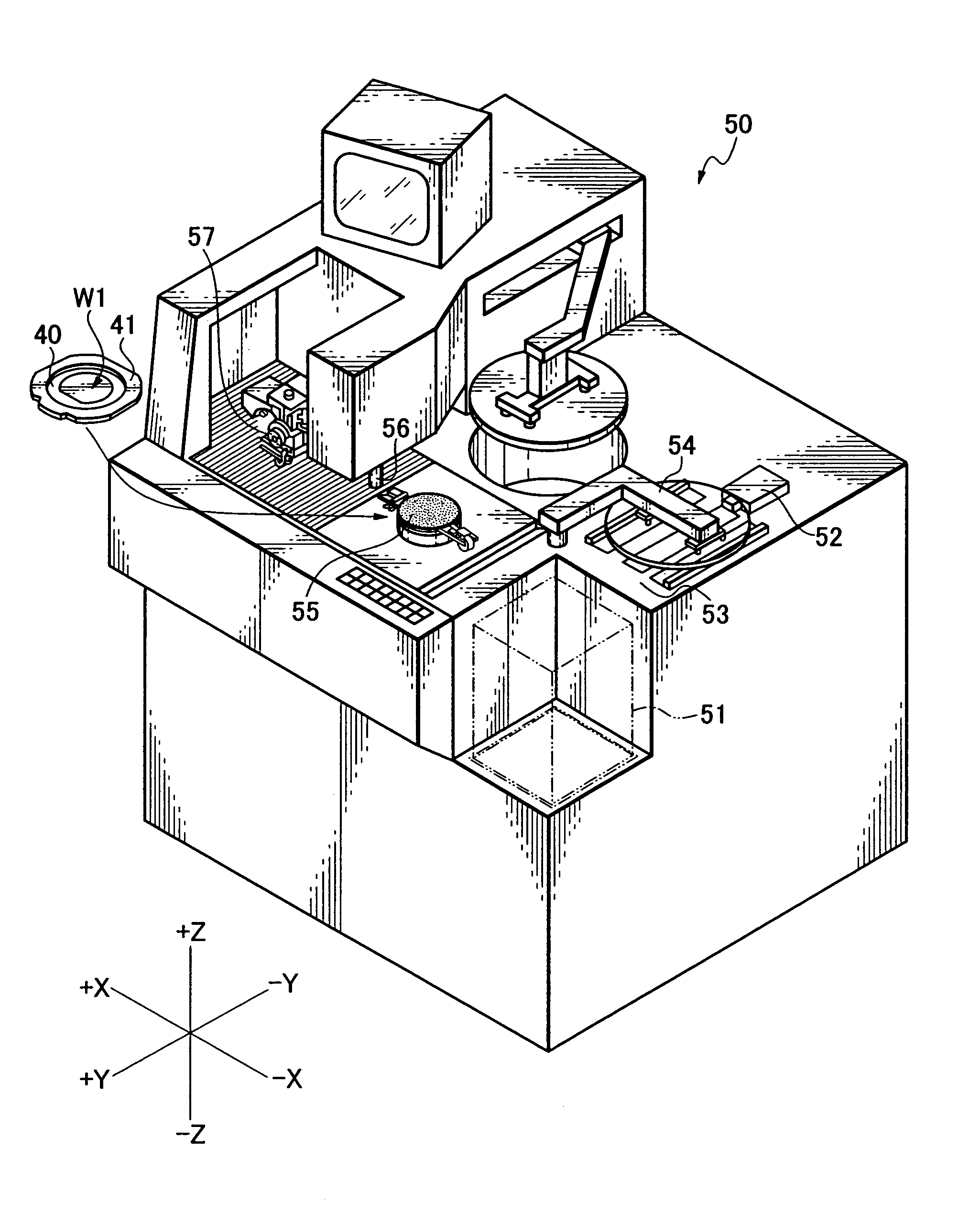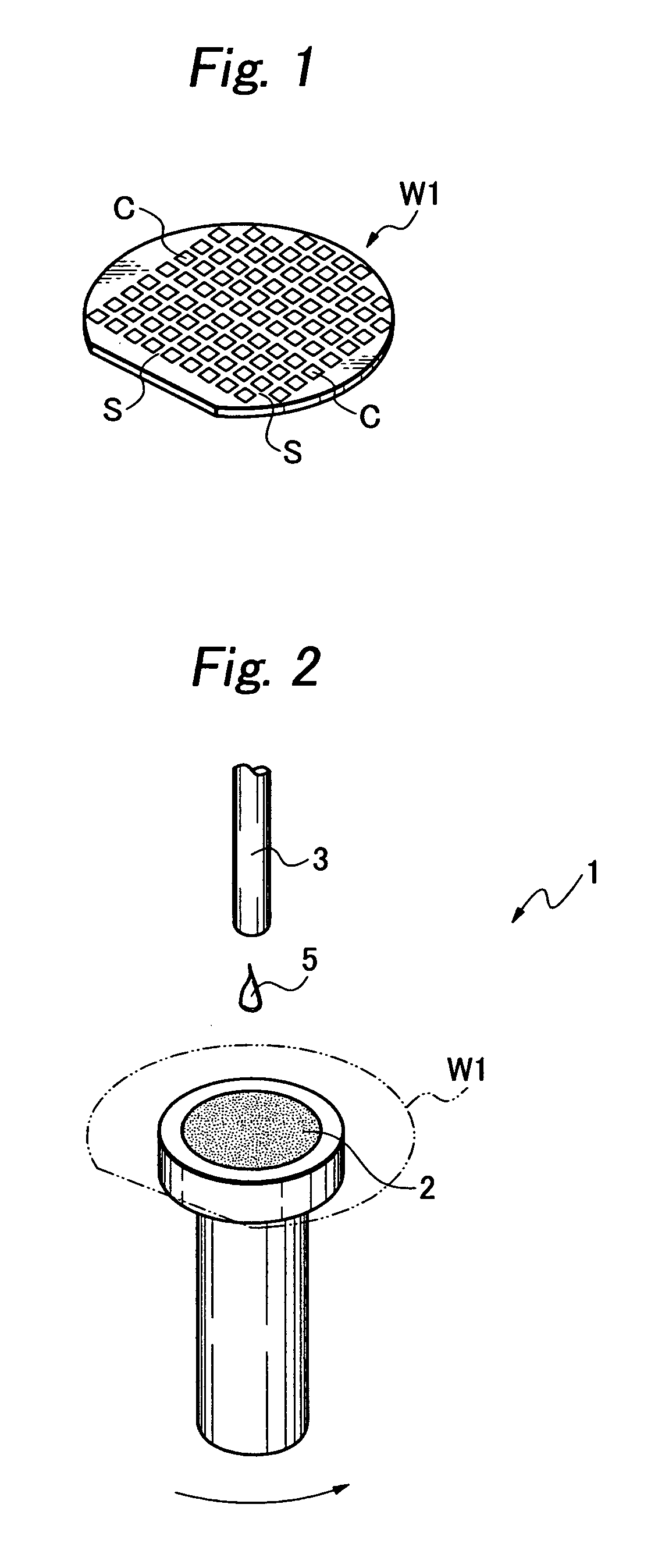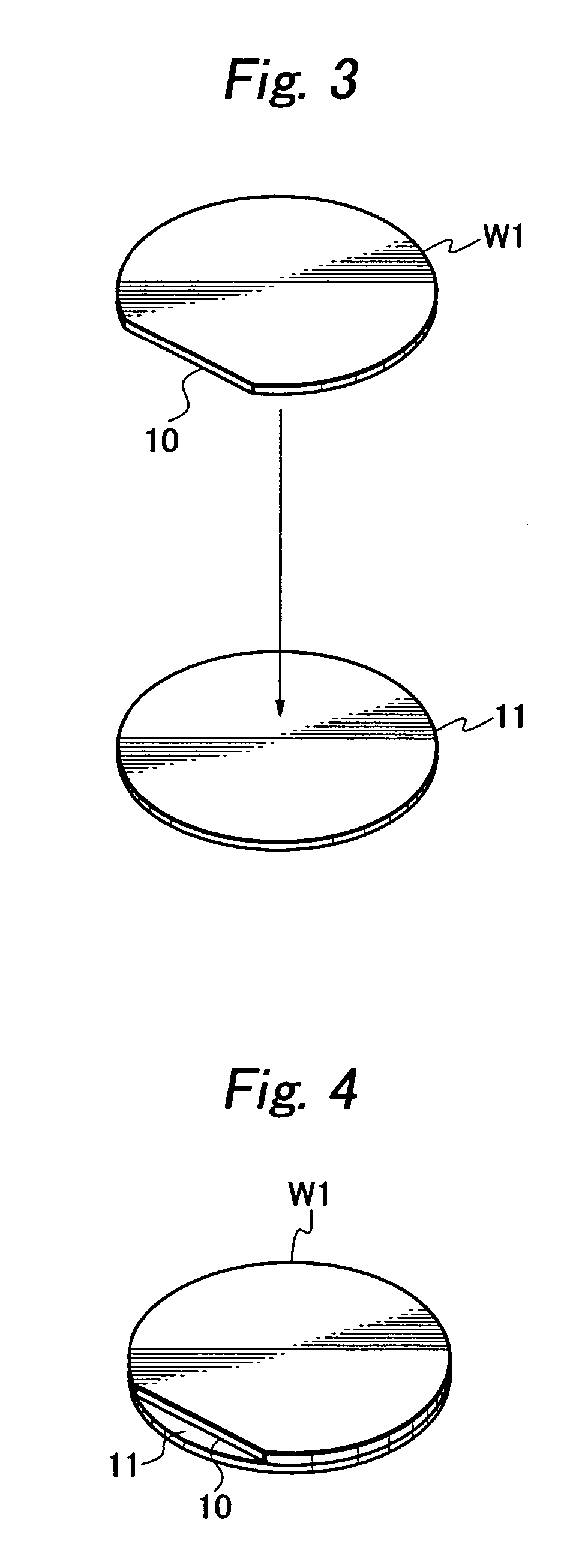Method for manufacturing semiconductor chip
a technology of semiconductor chips and manufacturing methods, applied in the direction of optics, instruments, optical elements, etc., can solve the problems of difficult re-bonding of semiconductor wafers, difficult to handle after grinding, and difficult to re-bond semiconductor wafers without damage, etc., to achieve easy removal, easy and safer, and reduce the adhesion force of the adhesive layer
- Summary
- Abstract
- Description
- Claims
- Application Information
AI Technical Summary
Benefits of technology
Problems solved by technology
Method used
Image
Examples
Embodiment Construction
[0044]As an embodiment of the present invention, explanation is made of a method in which the semiconductor wafer W1, segmented by streets S and formed with a plurality of circuits C, is divided into individual semiconductor chips, as shown in FIG. 1.
[0045]At first, a spin coater 1, for example, shown in FIG. 2 is used, to coat an adhesive layer having an adhesion force that is reduced upon exposure to light, e.g. liquid resin adhesive layer 10, over the surface of a semiconductor wafer W1 or support substrate 11. The explanation herein is of a case in which liquid resin 5 is coated to the surface of the semiconductor wafer W1.
[0046]The spin coater 1 has at least a rotatable support table 2 and a drip part 3 for allowing liquid resin 10 to drip. The semiconductor wafer W1 is held face up on the support table 2. While the support table 2 is rotated at a rotation speed, for example, of 100–8000 rpm for 5 seconds or more, liquid resin is allowed to drip through the drip part 3, to carr...
PUM
 Login to View More
Login to View More Abstract
Description
Claims
Application Information
 Login to View More
Login to View More - R&D
- Intellectual Property
- Life Sciences
- Materials
- Tech Scout
- Unparalleled Data Quality
- Higher Quality Content
- 60% Fewer Hallucinations
Browse by: Latest US Patents, China's latest patents, Technical Efficacy Thesaurus, Application Domain, Technology Topic, Popular Technical Reports.
© 2025 PatSnap. All rights reserved.Legal|Privacy policy|Modern Slavery Act Transparency Statement|Sitemap|About US| Contact US: help@patsnap.com



